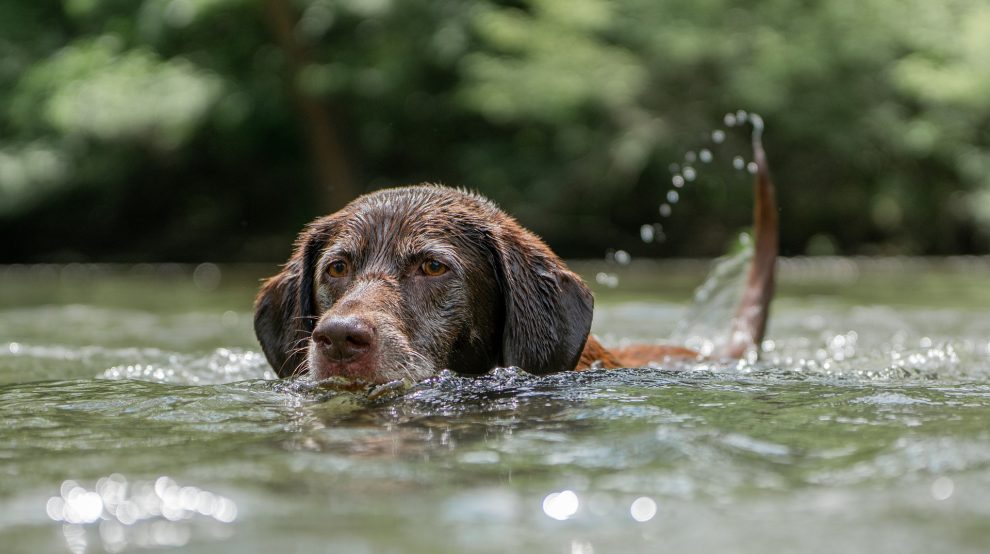VETS issue a warning to dog owners to help avoid pets being harmed by the toxic bacteria.
The British Veterinary Association (BVA) is urging pet owners to take steps to keep their dogs safe when walking near freshwater bodies this summer, as the warm weather brings with it an increased risk of toxic blue-green algae growth.
Blue-green algae, or cyanobacteria, is a group of bacteria that can contain dangerous toxins which can be harmful and potentially fatal to pets, livestock and birds if ingested even in small quantities. The algae may appear as green or greenish-brown scum on the surface of water like lakes and ponds. Dogs can swallow it by drinking water from an affected lake, river or pond or while licking their fur after going for a swim. It’s also possible for dogs to come into contact with it even if they don’t go for a paddle, as toxic blooms may be blown to the edges of water bodies.
The warning comes after several recent news reports of algal bloom sightings in lakes, ponds of rivers around the UK, including the Lake District and Shetland islands. Sadly, at the beginning of the month, it was reported that four dogs in County Fermanagh, Northern Ireland, and one dog in Conwy, Wales died after possible contact with blue-green algae. Confirmed sightings are identified by the UK Centre for Ecology and Hydrology’s (UKCEH) Bloomin’ Algae app, which encourages people to submit details and photos if they suspect they have spotted it.
British Veterinary Association President Malcolm Morley said: “Lots of dogs love water and won’t hesitate to dive straight in when they see a lake or go for a paddle in a pond. But toxic blue-green algae is very difficult to identify and, if ingested, can make dogs seriously unwell – and can even be fatal. We’re urging pet owners to keep their dogs on leads near water bodies where blue-green algae has been confirmed or, if unsure if a water body is safe, to keep them away from it completely. It may seem a shame to spoil your dog’s fun, particularly if they are used to swimming somewhere, but if you are unsure it is safe, it is not worth the risk.
“Being aware of the symptoms of exposure is also vital as there is no known antidote for the toxins and prompt treatment is critical to help give a chance of recovery. Symptoms can appear within a few minutes or hours of exposure, and commonly include vomiting, diarrhoea, drooling, disorientation, trouble breathing, seizures, and blood in faeces. If you have any concerns or are worried your pet may have had contact with blue-green algae, speak to your vet as soon as you can.”
Top tips for pet owners
- Look out for any warning signs near water bodies.
- Keep pets on a lead and by your side around water bodies known or suspected to have a blue-green algal bloom – don’t let pets swim in it or drink from it.
- If your dog has been swimming outside, wash its coat thoroughly with clean water afterwards.
- Seek emergency veterinary treatment if you’re concerned your pet may have ingested toxic algae.
- Report sightings of suspected blue-green algae with a photograph via the Bloomin’ Algae app. You can also set up notifications for confirmed sightings in your area.
- There are other ways to help your dog keep cool in the warmer weather: paddling pools can give them somewhere to cool off and you should always make sure they have access to clean water and shade if outdoors.
















